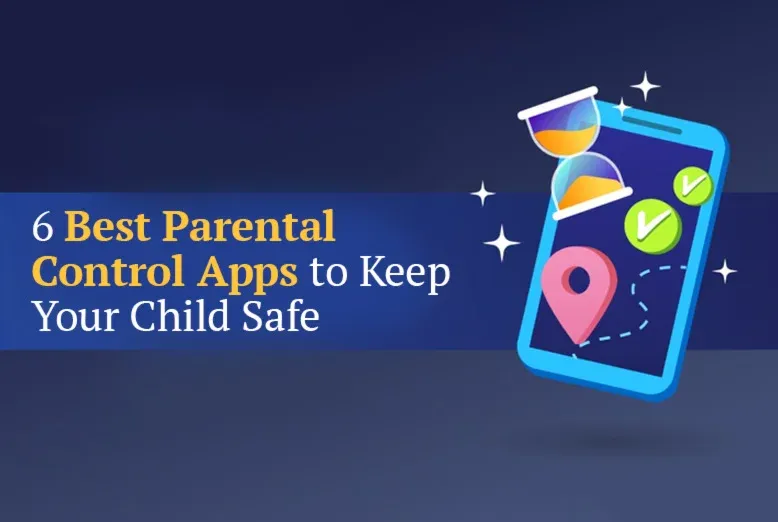

Let’s explore this topic in more detail with Stickman Hook below. In today’s digital age, parents face the challenge of keeping their children safe online while allowing them to explore and learn. Parental control apps have become essential tools for achieving this balance.
In an increasingly connected world, children are exposed to various online threats, including cyberbullying, inappropriate content, and predators. Parental control apps offer a solution by providing parents with the tools to monitor and manage their children’s online activities. These apps help create a safer digital environment for kids while allowing them to benefit from the wealth of information and educational resources available online.
Parental control apps come in various forms, each offering unique features and capabilities. Some focus on content filtering, while others provide comprehensive monitoring and time management tools. The key is to find an app that suits your family’s specific needs and your children’s ages.
Read more: Free Drawing and Art Apps for Creative Minds
Qustodio is a versatile parental control app that offers a wide range of features for both mobile devices and computers. It provides content filtering, time limits, location tracking, and detailed activity reports. The app is compatible with iOS, Android, Windows, and Mac, making it an excellent choice for families with multiple devices.
One of Qustodio’s standout features is its ability to monitor social media activity, including Facebook and Twitter. This can be particularly useful for parents concerned about their children’s online interactions. The app also offers a panic button feature, allowing children to quickly alert their parents in case of an emergency.
Qustodio offers both free and paid plans. The free version provides basic features for one device, while the paid plans offer more comprehensive protection for multiple devices. Pricing starts at $54.95 per year for up to five devices.
Pros:
• Comprehensive features
• Multi-platform support
• Social media monitoring
• User-friendly interface
Cons:
• Relatively expensive compared to some alternatives
• Some features may be too intrusive for older teens
Norton Family is a robust parental control app from the well-known cybersecurity company. It offers a range of features, including web filtering, time limits, location tracking, and detailed activity reports. The app is available for Windows, iOS, and Android devices.
One of Norton Family’s unique features is its School Time function, which allows parents to set specific rules for device usage during school hours. This can help ensure that children stay focused on their studies while using devices for educational purposes.
Norton Family is included with Norton 360 Deluxe and Norton 360 Premium subscriptions, which start at $49.99 per year. A standalone version of Norton Family is also available for $49.99 per year, covering an unlimited number of devices.
Pros:
• Comprehensive web filtering
• School Time feature
• Unlimited device coverage
• Detailed activity reports
Cons:
• No support for Mac computers
• Some features are not available on iOS devices
Kaspersky Safe Kids is a feature-rich parental control app that offers excellent value for money. It provides content filtering, app management, location tracking, and screen time controls. The app is available for Windows, Mac, iOS, and Android devices.
One of Kaspersky Safe Kids’ standout features is its YouTube search monitoring, which allows parents to see what their children are searching for on the popular video-sharing platform. The app also offers real-time alerts for suspicious activity and location-based alerts.
Kaspersky Safe Kids offers a free version with basic features and a premium version with more advanced capabilities. The premium version is priced at $14.99 per year, making it one of the most affordable options on the market.
Pros:
• Affordable pricing
• YouTube search monitoring
• Real-time alerts
• Multi-platform support
Cons:
• Some features are limited on iOS devices
• The free version is quite basic compared to other free options
When selecting a parental control app, it’s essential to consider your family’s specific needs and your children’s ages. Here are some factors to keep in mind:
Consider what features are most important to you. Do you need comprehensive web filtering, or are you more concerned about screen time management? Some apps offer more advanced features like social media monitoring or location tracking, which may be crucial for some families but unnecessary for others.
Look for an app with a user-friendly interface that’s easy to set up and manage. Some apps offer more granular controls, which can be beneficial for tech-savvy parents but may be overwhelming for others.
Ensure that the app is compatible with all the devices your family uses. Some apps work better on certain platforms than others, so it’s important to check compatibility before making a decision.
Consider your budget and the value you’re getting for the price. Some apps offer free versions with basic features, while others require a subscription for full functionality. Compare the features offered at different price points to find the best value for your needs.
Research the app’s privacy policy and data handling practices. Ensure that the app doesn’t collect unnecessary data and that any data collected is stored securely.
Consider your child’s age and maturity level when choosing an app. Younger children may require more comprehensive controls, while older teens might need more flexibility and privacy.
Read more: Best Scanner Apps to Turn Your Phone Into a Document Hub
While parental control apps can be powerful tools, they should be used as part of a broader approach to online safety. Here are some tips for implementing parental controls effectively:
1. Open Communication: Discuss online safety with your children and explain why you’re using parental control apps. Encourage them to come to you with any concerns or questions about their online experiences.
2. Set Clear Rules: Establish clear guidelines for device usage and online behavior. Make sure your children understand what is and isn’t acceptable.
3. Educate About Online Safety: Teach your children about potential online risks and how to navigate the digital world safely. This includes recognizing and avoiding cyberbullying, protecting personal information, and being cautious about online interactions.
4. Adjust Controls as Children Grow: Be prepared to adapt your approach as your children get older. Gradually increase their online freedom as they demonstrate responsible behavior and digital literacy.
5. Lead by Example: Model good digital habits yourself. Show your children how to use technology responsibly and maintain a healthy balance between online and offline activities.
6. Regular Check-ins: Have regular conversations with your children about their online experiences. This can help you identify any issues early and maintain open lines of communication.
7. Respect Privacy: While monitoring is important, respect your children’s privacy, especially as they get older. Find a balance between protection and trust.
8. Stay Informed: Keep up-to-date with the latest online trends, apps, and potential risks. This will help you make informed decisions about your family’s online safety strategy.
In conclusion, parental control apps can be valuable tools in creating a safer online environment for children. By choosing the right app and implementing it as part of a comprehensive approach to online safety, parents can help their children navigate the digital world more securely. Remember that no app can replace open communication and education about online safety. The goal should be to empower children to make responsible decisions online, gradually increasing their independence as they demonstrate maturity and digital literacy.
As technology continues to evolve, so too will the challenges and opportunities in online safety. Stay informed, remain flexible in your approach, and keep the lines of communication open with your children. By doing so, you can help ensure that they benefit from the positive aspects of the digital world while minimizing potential risks.